
 Innocuous they may have looked, but some of the Percival Pembrokes operated by the RAF Germany Communications Squadron
and No 60 Squadron had a clandestine Cold War role - one not even known to all members of the unit.
Week after week, they plied the air corridors between West Germany and West Berlin, photographing Soviet
and East German military targets for vital intelligence purposes. This is the story of Operation "Hallmark"
Innocuous they may have looked, but some of the Percival Pembrokes operated by the RAF Germany Communications Squadron
and No 60 Squadron had a clandestine Cold War role - one not even known to all members of the unit.
Week after week, they plied the air corridors between West Germany and West Berlin, photographing Soviet
and East German military targets for vital intelligence purposes. This is the story of Operation "Hallmark"
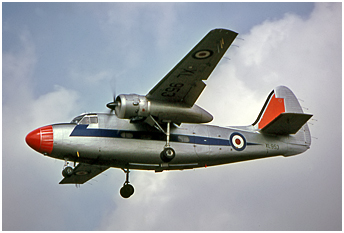 It was unusual even for the Cold War. Quite a few Squadron members knew that
something was going on. Some guessed a little more, but never knew the full story.
Those that really knew the details never talked about it. Even over 20 years after the
final missions were flown, there is still a reticence among the participants of Operation
Hallmark, to talk about the work that they discreetly did for nearly thirty years.
Operating from RAF Wildenrath in West Germany, 60 Squadron, with its venerable
Percival Pembrokes, led a 'dual life', flying very different types of mission. Some aircraft
were configured as 'mild mannered' VIP and communications aircraft shuttling
equipment and military personnel around Western Europe. Others led a more
clandestine life regularly prowling along the air corridors to and from West Berlin and
out to the edge of the Berlin Air Traffic Control Zone, secretly gathering photographic
intelligence on high priority Soviet and East German targets. Before reconnaissance satellites became
commonplace these almost daily French, US and UK flights were the West's only regular opportunity
to gather photographic - and electronic - intelligence on the potential adversaries anywhere. Overflights of
Warsaw Pact and Soviet territory were extremely rare, before being halted completely.
Kevin Wright had a unique opportunity to talk to some former members of 60
Squadron, and others, to find some details of the missions they flew during the long
period of German partition.
It was unusual even for the Cold War. Quite a few Squadron members knew that
something was going on. Some guessed a little more, but never knew the full story.
Those that really knew the details never talked about it. Even over 20 years after the
final missions were flown, there is still a reticence among the participants of Operation
Hallmark, to talk about the work that they discreetly did for nearly thirty years.
Operating from RAF Wildenrath in West Germany, 60 Squadron, with its venerable
Percival Pembrokes, led a 'dual life', flying very different types of mission. Some aircraft
were configured as 'mild mannered' VIP and communications aircraft shuttling
equipment and military personnel around Western Europe. Others led a more
clandestine life regularly prowling along the air corridors to and from West Berlin and
out to the edge of the Berlin Air Traffic Control Zone, secretly gathering photographic
intelligence on high priority Soviet and East German targets. Before reconnaissance satellites became
commonplace these almost daily French, US and UK flights were the West's only regular opportunity
to gather photographic - and electronic - intelligence on the potential adversaries anywhere. Overflights of
Warsaw Pact and Soviet territory were extremely rare, before being halted completely.
Kevin Wright had a unique opportunity to talk to some former members of 60
Squadron, and others, to find some details of the missions they flew during the long
period of German partition.
Early Days
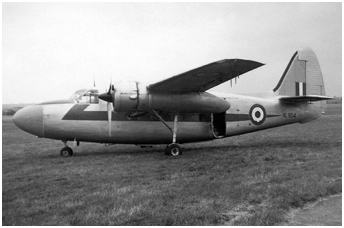 The RAF had been undertaking photographic collection flights in the Berlin Air Corridors
from 1945 onwards (1), but mostly on an adhoc basis, largely for local tactical purposes
and with little direction from London.
In the 1945 to 1947 period an eclectic mix of aircraft were used for photography in the Corridors,
starting with a Mosquito using a forward-facing F.52 camera in 1945 and 1946. The Mosquto's replacement,
until 1947, was the C-in-C's personal Dakota with a hand-held F.24 camera pointed out of the co-pilot's
window. The Dakota was abandoned as a platform because the C-in-C became concerned about the compromise
of 'his' aircraft that he used when he represented British forces on the Continent and the rather
unsatisfactory view from the Dakota's flight deck.
In 1947 the Avro Anson was selected for Corridor flights for two reasons. First, the type was in widespread
use in Britain and mainland Europe as a communications aircraft and so was a common sight. Secondly,
some Ansons had already been modified for photographic reconnaissance work and used to update urban mapping
of the UK to assist with post-Second World War reconstruction plans. The Ansons used on Corridor operations
had a split-pair of F.52 cameras with either 14in or 20in lenses and a single port (left) facing oblique
with a 36in lens. This camera fit remained extant until replaced by Pembrokes from 1956, although
some Ansons soldiered on until 1957.
The only purpose-built PR aircraft used in the Corridors were the Spitfire PR.XIXs of II (AC) Squadron
operating from Bückeburg for a short time from 1950. They were used on 'unofficial' flights to photograph
Soviet Zone airfields for indications of any build-up of aircraft that could be a precursor to a further
Berlin blockade. The Spitfires operated with a split-pair of F.52 cameras with 36in lenses sometimes used in an
oblique mode by banking the aircraft. Often flown above 10,000ft, the Spitfires were not part of the British Corridor
programme but assiged for that specific task.
The RAF had been undertaking photographic collection flights in the Berlin Air Corridors
from 1945 onwards (1), but mostly on an adhoc basis, largely for local tactical purposes
and with little direction from London.
In the 1945 to 1947 period an eclectic mix of aircraft were used for photography in the Corridors,
starting with a Mosquito using a forward-facing F.52 camera in 1945 and 1946. The Mosquto's replacement,
until 1947, was the C-in-C's personal Dakota with a hand-held F.24 camera pointed out of the co-pilot's
window. The Dakota was abandoned as a platform because the C-in-C became concerned about the compromise
of 'his' aircraft that he used when he represented British forces on the Continent and the rather
unsatisfactory view from the Dakota's flight deck.
In 1947 the Avro Anson was selected for Corridor flights for two reasons. First, the type was in widespread
use in Britain and mainland Europe as a communications aircraft and so was a common sight. Secondly,
some Ansons had already been modified for photographic reconnaissance work and used to update urban mapping
of the UK to assist with post-Second World War reconstruction plans. The Ansons used on Corridor operations
had a split-pair of F.52 cameras with either 14in or 20in lenses and a single port (left) facing oblique
with a 36in lens. This camera fit remained extant until replaced by Pembrokes from 1956, although
some Ansons soldiered on until 1957.
The only purpose-built PR aircraft used in the Corridors were the Spitfire PR.XIXs of II (AC) Squadron
operating from Bückeburg for a short time from 1950. They were used on 'unofficial' flights to photograph
Soviet Zone airfields for indications of any build-up of aircraft that could be a precursor to a further
Berlin blockade. The Spitfires operated with a split-pair of F.52 cameras with 36in lenses sometimes used in an
oblique mode by banking the aircraft. Often flown above 10,000ft, the Spitfires were not part of the British Corridor
programme but assiged for that specific task.
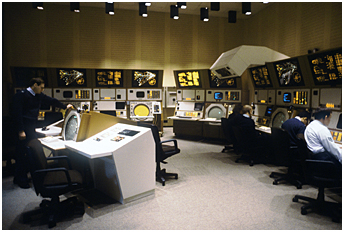
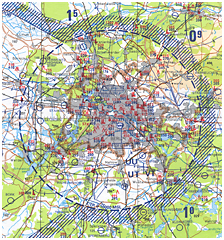 2TAF Communications Squadron and its predecessors were based at RAF Bückeburg until 1954 when the squadron moved to RAF Wildenrath
and became heavily involved in British Corridor operations. In 1955 it possessed approximately twelve Anson Mk.12/19s and 21s,
a Valetta, a Devon, a Prentice and some Vampires. From January 1956, the Ansons were gradually replaced by Percival Pembrokes.
The three Pembrokes initially operated CASEVAC missions between Germany and England. On 1 January 1959, 2TAF Communications
Squadron was renamed the 'Royal Air Force Germany Commmunications Squadron' (RAFG Comms Sqn) with Pembrokes, a Devon,
a Heron and a Valetta used by the C-in-C RAF Germany. On 4 February 1969 it became 60 Squadron RAF.
In 1956 Whitehall became a more active
participant in the authorisation process. After the May 1960 downing of Gary Powers
U-2, amid increasing tensions over Berlin too, individual corridor flights were then
authorised from London at the highest level.
A now declassified 'Top Secret' December 1960 request to Prime Minister Harold
Macmillan, from Cabinet Secretary Sir Norman Brook, seeks approval for the RAF to
undertake two Pembroke photographic flights along the Berlin Air Corridors to "take
advantage of a unique opportunity to obtain valuable intelligence on Soviet surface-to-air
guided weapons." Two similar flights were also authorised for the RAF Gatow
based Chipmunk, available to BRIXMIS, in the Berlin Air Traffic Control Zone. Those
flights revealed surface to air missile sites at three separate locations. The flights were
apparently well received by the Americans, with whom the British shared that imagery.
In London, the Joint Intelligence Committee, assessing the risk of discovery as low,
quickly requested authorisation for more flights. Similar requests continued, on a regular
basis, through 1961 - especially after the erection of the Berlin Wall in August - when
existing intelligence sources begin to dry up. By 1962 they had become regular weekly
missions. Though the flights went ahead successfully not everyone in Government was
happy about them. Harold Watkinson, then Defence Minister, commented on one early
request: "I doubt myself whether the risk is worth taking. Using the corridor for spy flights
would be a good card for the Russians."
But the flights continued and later regularised with day-to-day authorisation passing to
HQ RAF Germany. Although eight Pembrokes had originally been built for
photographic use in the Far East all, except XF799, were later disposed of. But under
a Contract issued in support of 'Modification 614' work began at the end of 1963 to
modify three Pembrokes XL953 and XL954 and the updating of XF799 for photographic
work - some of the old Photo Pembrokes that had already been brought back from far East,
were flying corridor missions before, using their old camera fit.
The contract involved, providing removable fixings for camera installations in the
aircraft and associated camera equipment. These Pembrokes became known locally
as the 'fit' aircraft. An additional Pembroke - XF796 - flew in the role until 1975, but with a
less capable camera equipment fit.
2TAF Communications Squadron and its predecessors were based at RAF Bückeburg until 1954 when the squadron moved to RAF Wildenrath
and became heavily involved in British Corridor operations. In 1955 it possessed approximately twelve Anson Mk.12/19s and 21s,
a Valetta, a Devon, a Prentice and some Vampires. From January 1956, the Ansons were gradually replaced by Percival Pembrokes.
The three Pembrokes initially operated CASEVAC missions between Germany and England. On 1 January 1959, 2TAF Communications
Squadron was renamed the 'Royal Air Force Germany Commmunications Squadron' (RAFG Comms Sqn) with Pembrokes, a Devon,
a Heron and a Valetta used by the C-in-C RAF Germany. On 4 February 1969 it became 60 Squadron RAF.
In 1956 Whitehall became a more active
participant in the authorisation process. After the May 1960 downing of Gary Powers
U-2, amid increasing tensions over Berlin too, individual corridor flights were then
authorised from London at the highest level.
A now declassified 'Top Secret' December 1960 request to Prime Minister Harold
Macmillan, from Cabinet Secretary Sir Norman Brook, seeks approval for the RAF to
undertake two Pembroke photographic flights along the Berlin Air Corridors to "take
advantage of a unique opportunity to obtain valuable intelligence on Soviet surface-to-air
guided weapons." Two similar flights were also authorised for the RAF Gatow
based Chipmunk, available to BRIXMIS, in the Berlin Air Traffic Control Zone. Those
flights revealed surface to air missile sites at three separate locations. The flights were
apparently well received by the Americans, with whom the British shared that imagery.
In London, the Joint Intelligence Committee, assessing the risk of discovery as low,
quickly requested authorisation for more flights. Similar requests continued, on a regular
basis, through 1961 - especially after the erection of the Berlin Wall in August - when
existing intelligence sources begin to dry up. By 1962 they had become regular weekly
missions. Though the flights went ahead successfully not everyone in Government was
happy about them. Harold Watkinson, then Defence Minister, commented on one early
request: "I doubt myself whether the risk is worth taking. Using the corridor for spy flights
would be a good card for the Russians."
But the flights continued and later regularised with day-to-day authorisation passing to
HQ RAF Germany. Although eight Pembrokes had originally been built for
photographic use in the Far East all, except XF799, were later disposed of. But under
a Contract issued in support of 'Modification 614' work began at the end of 1963 to
modify three Pembrokes XL953 and XL954 and the updating of XF799 for photographic
work - some of the old Photo Pembrokes that had already been brought back from far East,
were flying corridor missions before, using their old camera fit.
The contract involved, providing removable fixings for camera installations in the
aircraft and associated camera equipment. These Pembrokes became known locally
as the 'fit' aircraft. An additional Pembroke - XF796 - flew in the role until 1975, but with a
less capable camera equipment fit.
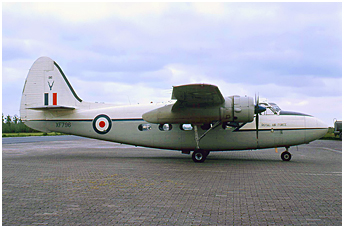
 The Pembrokes were configured to carry five cameras mounted in a special frame
anchored to the aircraft's floor and ceiling. The 'fit' consisted of three F96 cameras with
12 inch lenses mounted in a 'fan' forward to aft for downward observation. These were
protected by sliding hatches on the underside of the fuselage - essential for some
element of secrecy and as protection from damage as the Pembroke had very low
ground clearance. There were two additional F96 cameras fitted with 48 inch lenses.
These looked out of the Pembrokes cabin windows - second from the front on the port side
and second from the front on the starboard side. This necessitated the replacement of
the standard windows by highly expensive 'quartz' windows to minimize distortion during
photography. The cameras were fitted with 500ft film magazines. Given the Pembrokes
performance limitations the camera fit represented pretty much a full load for the
aircraft.
60 Squadron navigator and later CO, between 1988-90, Squadron Leader Phil Chaney
explained: "Around 1980, more modern camera equipment became available to us -
similar to that then used on the U-2 to give us true horizon to horizon coverage. The
resolution on those cameras were much higher and therefore more susceptible to the
effects of vibration." That became a problem on one particular aircraft - XL953. This had
constant vibration problems which affected the aircraft's photographic performance.
Despite many efforts the problem was never really rectified, though it was ultimately
solved in a rather drastic way. "In May 1980, the aircraft was being prepared for deep
maintenance at RAF Wildenrath. A static charge ignited some remaining fuel being
drained from it. The resulting fire saw the hangar roof damaged and half of XL953 burnt
out." The story then goes onto become part of Squadron folklore. Later in the day the
new CO, Squadron Leader Andy Spanner was greeted on his return to Wildenrath
reportedly with "Boss, good news is we've managed to sort out the vibration problem on
'953. Bad news is the aircraft is burnt out."
The Pembrokes were configured to carry five cameras mounted in a special frame
anchored to the aircraft's floor and ceiling. The 'fit' consisted of three F96 cameras with
12 inch lenses mounted in a 'fan' forward to aft for downward observation. These were
protected by sliding hatches on the underside of the fuselage - essential for some
element of secrecy and as protection from damage as the Pembroke had very low
ground clearance. There were two additional F96 cameras fitted with 48 inch lenses.
These looked out of the Pembrokes cabin windows - second from the front on the port side
and second from the front on the starboard side. This necessitated the replacement of
the standard windows by highly expensive 'quartz' windows to minimize distortion during
photography. The cameras were fitted with 500ft film magazines. Given the Pembrokes
performance limitations the camera fit represented pretty much a full load for the
aircraft.
60 Squadron navigator and later CO, between 1988-90, Squadron Leader Phil Chaney
explained: "Around 1980, more modern camera equipment became available to us -
similar to that then used on the U-2 to give us true horizon to horizon coverage. The
resolution on those cameras were much higher and therefore more susceptible to the
effects of vibration." That became a problem on one particular aircraft - XL953. This had
constant vibration problems which affected the aircraft's photographic performance.
Despite many efforts the problem was never really rectified, though it was ultimately
solved in a rather drastic way. "In May 1980, the aircraft was being prepared for deep
maintenance at RAF Wildenrath. A static charge ignited some remaining fuel being
drained from it. The resulting fire saw the hangar roof damaged and half of XL953 burnt
out." The story then goes onto become part of Squadron folklore. Later in the day the
new CO, Squadron Leader Andy Spanner was greeted on his return to Wildenrath
reportedly with "Boss, good news is we've managed to sort out the vibration problem on
'953. Bad news is the aircraft is burnt out."
Flying the Corridor
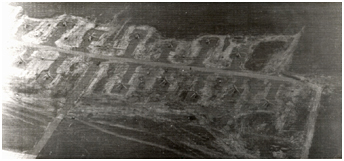
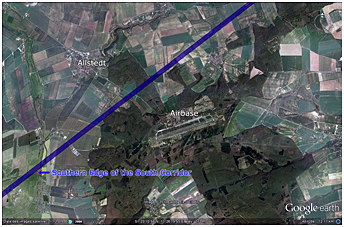 Then Flight Lieutenant Dave Clark, who had previously flown Pembrokes with 152
Squadron in the Middle East during the mid 1960's, was posted to 60 Squadron for a
second tour on the type in May 1975. "I remember on my arrival at Wildenrath, we were
shown around an aircraft in the hangar by the boss. Being experienced on the type I
noticed all sorts of funny pipes and things on the inside of it, so I asked what they were.
The Boss casually said "just ignore it" which I did. I had no idea that we were doing the
reconnaissance flights until some months later when I was introduced to the role.
The reconnaissance side of the operation was never spoken about. One began to think
that something funny was going on because the aircraft 'in the fit' was always parked
directly outside the Squadron - on the first slot. Only that aircraft was allowed to park
there and with its door always facing the hangar. The curtains were always drawn and
it was kept locked."
Within 60 Squadron, certainly not all the air and ground crews knew what the 'fit' aircraft
and their crews were doing. Phil Chaney, told us: "Knowledge of Operation Hallmark
was kept very closely guarded with only a very small number of people on the Station
having full knowledge. Essentially, the only people cleared to have access to the
contents of the file containing the Operation Hallmark Order were: Station Commander
and OC Ops Wing, and those aircrew of 60 Squadron on the list of active flyers."
Then Flight Lieutenant Dave Clark, who had previously flown Pembrokes with 152
Squadron in the Middle East during the mid 1960's, was posted to 60 Squadron for a
second tour on the type in May 1975. "I remember on my arrival at Wildenrath, we were
shown around an aircraft in the hangar by the boss. Being experienced on the type I
noticed all sorts of funny pipes and things on the inside of it, so I asked what they were.
The Boss casually said "just ignore it" which I did. I had no idea that we were doing the
reconnaissance flights until some months later when I was introduced to the role.
The reconnaissance side of the operation was never spoken about. One began to think
that something funny was going on because the aircraft 'in the fit' was always parked
directly outside the Squadron - on the first slot. Only that aircraft was allowed to park
there and with its door always facing the hangar. The curtains were always drawn and
it was kept locked."
Within 60 Squadron, certainly not all the air and ground crews knew what the 'fit' aircraft
and their crews were doing. Phil Chaney, told us: "Knowledge of Operation Hallmark
was kept very closely guarded with only a very small number of people on the Station
having full knowledge. Essentially, the only people cleared to have access to the
contents of the file containing the Operation Hallmark Order were: Station Commander
and OC Ops Wing, and those aircrew of 60 Squadron on the list of active flyers."
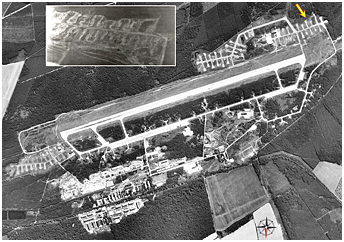 Crews were generally assigned to flying 'the corridor' for a week, usually flying one
round trip during that time, but sometimes two. They would be told on a Monday
morning the outline flying plan for the week, matching that with the weather forecasts,
as clearly weather was crucial for successful missions.
Dave Clark again: "The navigator got the prescribed route from HQ RAFG at
Rheindhalen. We would generally take off by about 10.00 and use a standard routing
down to the Corridor entrance. Once in the Corridor it was down to the navigator how
close you went to the edge of it. We generally flew at 3,500ft, if cloud conditions
allowed. One navigator was up front, next to the pilot and the other down the back
operating the equipment."
Paul Hickley, a 60 Squadron navigator explained their two different roles. "The
front-seater was responsible for all of the route navigation, including preparing both the
navigation flight plan and the Air Traffic flight plan notification. The rear-seat navigator
could not see forwards and so, for vertical shots, had to rely entirely on the front seat
navigator (or occasionally the pilot) for information on when to switch the vertical
cameras on. However, he did have a vertical sight, a drift-sight, rather like a
downward-pointing telescope that could act as a track indicator. If the initial line-up was
less than ideal, the navigator could 'talk' the pilot onto the right line once he saw the
target. The pilot would then use coarse (indeed, rather agricultural) applications of
rudder, whilst trying to keep the wings level, because a gentle turn with bank would
have displaced the target from the centre.
Most important of all, the front seat navigator was to ensure that the aircraft stayed
within the corridors. These only extended 10 miles each side of the centre-line and
some of our vertical targets lay very near indeed to the corridor edge."
Crews were generally assigned to flying 'the corridor' for a week, usually flying one
round trip during that time, but sometimes two. They would be told on a Monday
morning the outline flying plan for the week, matching that with the weather forecasts,
as clearly weather was crucial for successful missions.
Dave Clark again: "The navigator got the prescribed route from HQ RAFG at
Rheindhalen. We would generally take off by about 10.00 and use a standard routing
down to the Corridor entrance. Once in the Corridor it was down to the navigator how
close you went to the edge of it. We generally flew at 3,500ft, if cloud conditions
allowed. One navigator was up front, next to the pilot and the other down the back
operating the equipment."
Paul Hickley, a 60 Squadron navigator explained their two different roles. "The
front-seater was responsible for all of the route navigation, including preparing both the
navigation flight plan and the Air Traffic flight plan notification. The rear-seat navigator
could not see forwards and so, for vertical shots, had to rely entirely on the front seat
navigator (or occasionally the pilot) for information on when to switch the vertical
cameras on. However, he did have a vertical sight, a drift-sight, rather like a
downward-pointing telescope that could act as a track indicator. If the initial line-up was
less than ideal, the navigator could 'talk' the pilot onto the right line once he saw the
target. The pilot would then use coarse (indeed, rather agricultural) applications of
rudder, whilst trying to keep the wings level, because a gentle turn with bank would
have displaced the target from the centre.
Most important of all, the front seat navigator was to ensure that the aircraft stayed
within the corridors. These only extended 10 miles each side of the centre-line and
some of our vertical targets lay very near indeed to the corridor edge."
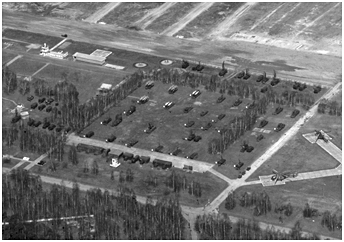
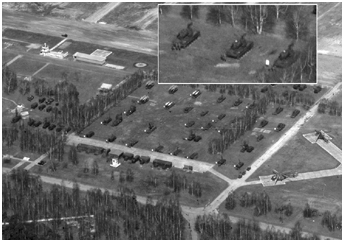 "We were always
advised that we faced the possibility of being shot down if we strayed outside. Most
bonafide air traffic in the Berlin Air Corridors hugged the centre-line, as we did
ourselves when not on Hallmark missions, because they knew the risks of not doing so.
Our job required us to go to the edges, and it concentrated the mind. Watching the
Pembrokes on their radars, this would sometimes make the air traffic controllers in the
Berlin Air Safety Centre rather nervous until they got the message that the Pembrokes
were best left alone to go about their business.
Many of the targets were ten to fifteen miles outside the corridors and were perfectly
open to photography if the visibility was good enough. The F-96 oblique cameras had
a sight-line that could be varied by a manual spring balance adjustment from the
horizontal to about fifteen degrees depression angle. If the rear-seater saw the target
out of the side windows in good time, he could adjust the camera down to the correct
depression angle by visual estimation. Once the camera was in line, he could squint
down the barrel (the lens assembly looked like a telescope and filled much of the cabins
width) and ask the pilot to make any final adjustment required by a combination of bank
and rudder which kept the wing down the right amount but didn't change heading. If he
picked it up late, the whole aiming process would have to be done by talking the pilot
on to the right angle of bank, because the camera angle motors were quite slow."
On approach to RAF Gatow the crew would switch off the equipment and close the
curtains. Then land and park up with the door opposite the hangar, so the East German
Guards, in the nearby watch towers, could not see into the aircraft door. Outside, crews
would also have to be careful in conversation as directional microphones were used by
some watchtowers. The pilot would then create a fictitious 'snag' on the aircraft, always
something relatively minor, but that would require an air test after 'rectification'.
Brian King took up the account: "The airtest generally took place in the afternoon, or
perhaps the following day if weather, or planning, required it. The flight would usually
necessitate flying around the Berlin Control Zone - particularly close to its edge with the
cameras working at around 3,500 feet. Then returning to RAF Gatow to stay overnight."
Generally the following day, with the 'fault' cleared, the Pembroke would depart
repeating the inbound procedure in reverse. It was standard practice that the flights in
and out of Berlin would be flown along different corridors so as to maximise target
coverage.
"We were always
advised that we faced the possibility of being shot down if we strayed outside. Most
bonafide air traffic in the Berlin Air Corridors hugged the centre-line, as we did
ourselves when not on Hallmark missions, because they knew the risks of not doing so.
Our job required us to go to the edges, and it concentrated the mind. Watching the
Pembrokes on their radars, this would sometimes make the air traffic controllers in the
Berlin Air Safety Centre rather nervous until they got the message that the Pembrokes
were best left alone to go about their business.
Many of the targets were ten to fifteen miles outside the corridors and were perfectly
open to photography if the visibility was good enough. The F-96 oblique cameras had
a sight-line that could be varied by a manual spring balance adjustment from the
horizontal to about fifteen degrees depression angle. If the rear-seater saw the target
out of the side windows in good time, he could adjust the camera down to the correct
depression angle by visual estimation. Once the camera was in line, he could squint
down the barrel (the lens assembly looked like a telescope and filled much of the cabins
width) and ask the pilot to make any final adjustment required by a combination of bank
and rudder which kept the wing down the right amount but didn't change heading. If he
picked it up late, the whole aiming process would have to be done by talking the pilot
on to the right angle of bank, because the camera angle motors were quite slow."
On approach to RAF Gatow the crew would switch off the equipment and close the
curtains. Then land and park up with the door opposite the hangar, so the East German
Guards, in the nearby watch towers, could not see into the aircraft door. Outside, crews
would also have to be careful in conversation as directional microphones were used by
some watchtowers. The pilot would then create a fictitious 'snag' on the aircraft, always
something relatively minor, but that would require an air test after 'rectification'.
Brian King took up the account: "The airtest generally took place in the afternoon, or
perhaps the following day if weather, or planning, required it. The flight would usually
necessitate flying around the Berlin Control Zone - particularly close to its edge with the
cameras working at around 3,500 feet. Then returning to RAF Gatow to stay overnight."
Generally the following day, with the 'fault' cleared, the Pembroke would depart
repeating the inbound procedure in reverse. It was standard practice that the flights in
and out of Berlin would be flown along different corridors so as to maximise target
coverage.
Air corridors closure "On 29 September, the Soviets unilaterally announced an effective closure of the northern
and central air corridors to Berlin from 300130 to 300330 September. Allied Mission ground
tours were dispatched into the affected area to determine the nature of activity in progress
during that time period. One tour observed the probable launching of a missile from the
vicinity of Pullen Berg (UU 2143) toward the west at approximately 300330 September.
A second tour located southwest of that location observed what appeared to be a missile
in flight at approximately the same time. It is possible that a FROG may have been fired from
the Rathenow PRA into an impact area in the Letzlinger Heide PRA or within the Rathenow PRA." |
notes
(1) The operation code name changed on numerous occasions. Sometimes changes appear to just have been routine to keep the Soviets guessing. On other occasions changes may have been in response to concern over possible security breaches. For example, until 19 April 1962 the operation was known as Fabian. A memo of that date suggests that the code word may have been compromised through possible discussion of operational details on an insecure line, so sometime before 13 June it was renamed Operation Tokay. Around the 25 May 1965, it was renamed Ladbrook after another mis-communication over the operations security classification. A JIC Report of October 1969 names the operation Remote.
 |
The Hunting Pembrokes > Part 2 |
 |
Plan du site - Sitemap |  |
